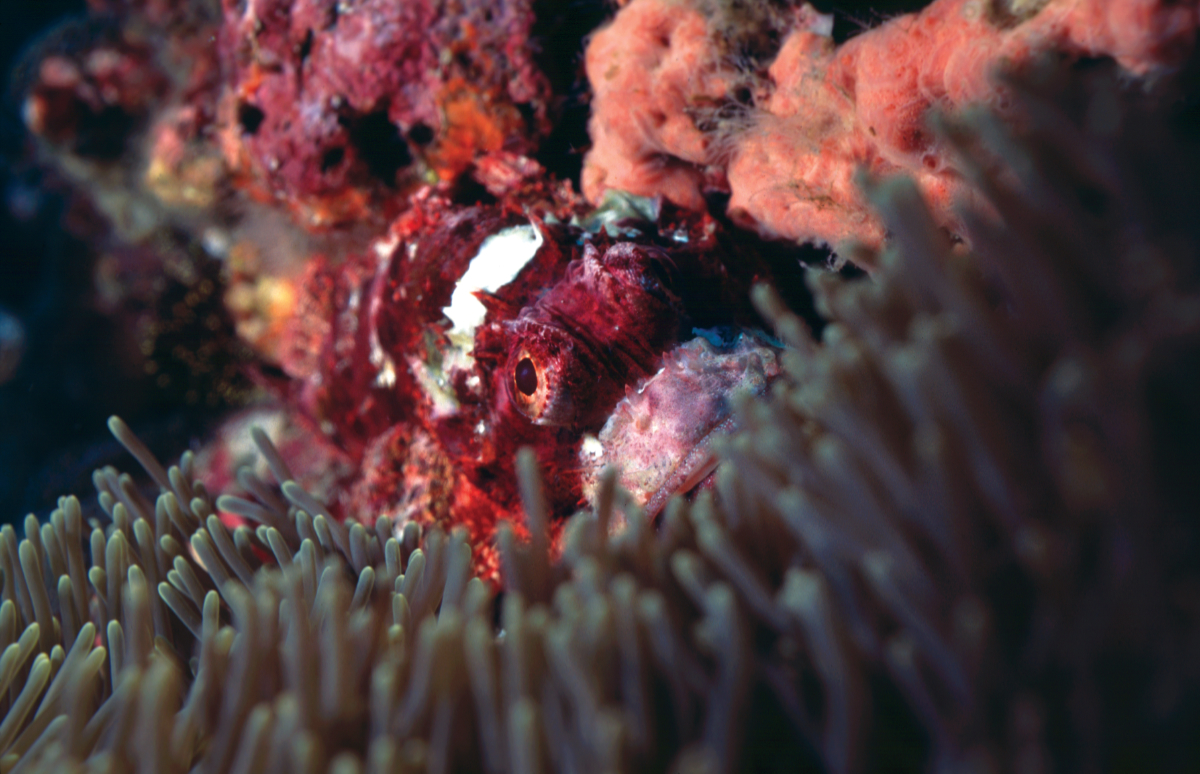Hazardous Marine Life
Southeast Asia Pilot – October 2025
Dealing with hazardous marine life (Part 2)
Welcome to the second part of our hazardous marine life blog. If you missed the first part, we suggest you go there first from this link.
Here we continue the ‘handful’ of ‘pain-inducing nasties’ among marine life to be particularly cautious of – and what to do if you are unfortunate enough to come into contact with them!
Hot Water Treatment (HTW)
Tightly tie a broad ligature between the inflicted limb and the body, which must be released every 15 minutes.
Then immerse the inflicted area in water at a temperature of 50ºC for two hours, or until the pain stops. Follow this up by antibiotic and anti-tetanus treatment.
Marine life on the seabed
Fire coral
As opposed to being true coral, fire coral is more closely related to stinging hydroids. However, as its name suggests, any contact with fire coral will result in some very nasty and painful blistering. The treatment is the same as for stinging hydroids (Flush or submerge the affected area with acetic acid [vinegar] followed by antihistamine cream to ease any pain.)
Cone shells
Never handle cone shells! They can fire a poisonous dart from a tube-like organ. This results in numbness followed by local muscle paralysis, which can lead to respiratory paralysis and heart failure. The treatment is to immediately tie a broad ligature tightly between the infliction and the body and wash the wound. CPR may be necessary.
Sea urchins
Sea urchins can have poisonous spines. Even if not poisonous, though, they still easily puncture skin and break off, especially if trodden on. This leaves painful wounds that can go sceptic. Apply HTW. This will help in softening up any embedded spines and allow the body to eject them. Applying papaya juice or wine will also help to reduce pain. Septic wounds will require antibiotics.
Stingrays
Ranging in size from a few centimetres across to several metres, stingrays have spines in the top of their tails. They can lash out in any direction if trodden on or caught. The wounds can be large and, in rare cases, fatal. Clean the wound and remove any spines with tweezers. Follow up with HTW.
Stonefish
The best camouflaged, stonefish are the most dangerous member of the scorpionfish family. The spines in their dorsal fins contain very nasty venom and are raised if the fish is disturbed. These cause intense pain and swelling and you should immediately clean the wound and adhere to HTW.
Scorpionfish
Although less camouflaged and not as dangerous as the stonefish, scorpionfish should still be avoided. Failing to do so will require the same treatment as for stonefish.

Onboard First Aid Kit
This should be waterproof, sealed and preferably compartmentalised for ease of finding things when needed quickly. As a minimum, ensure it contains the following items:
First Aid Manual | Hazardous marine life reference and identification guides | Emergency contact numbers for en-route locations & destination | Pencil and notebook | Tweezers | Round ended safety scissors | Large sterile dressings | Fabric band-aid plaster/dressing strip | Triangular bandage | Large safety pins | Sterile cotton wool | 2” wide crepe bandages | Eye drops | Antiseptic cream | Betadine | Antihistamine cream | Vinegar | Sachets of electrolytes | Sterilised syringe and needles
Definitive cruising guide
When planning your Southeast Asian cruising, don’t forget to get a copy of Southeast Asia Pilot. It remains the definitive cruising guide to all of Southeast Asia’s ocean wonderland. The book details 600+ anchorages with shoreside tips and other useful insights. It covers nine countries, from the Andaman Sea to the Spice Islands – with introductory notes on several more. Available now in print or as an interactive eBook.
⇒ ⇒ ⇒ Buy Southeast Asia Pilot
Southeast Asia Pilot and Phuket Publicity Services do their best to ensure that the information on this website is accurate. However, good seamanship demands that seafarers check critical information carefully with relevant sources to ensure it is up to date.Facebook






